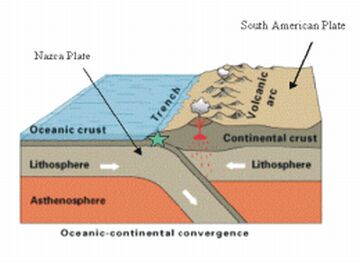
Powerful earthquakes have been shivering the earth through ages, plundering cities and eliminating lives. True, we are helpless in the hands of nature that foster us. But, did we ever think of the reasons behind the atrocious shakes that occur in subduction zones? Subduction zones are areas of the sea floor just offshore where two tectonic plates meet and one dives beneath the other. Never mind.
Scientists at the University of Washington believe they have found a key to determine which subduction zones — or which specific areas within a subduction zone — might produce the most severe shaking when they rupture.
Christopher Fuller, a University of Washington doctoral student in Earth and space sciences explains it:
As the subducting plate slides beneath the upper plate, stress begins to build where the plates meet and the upper plate can deform to create a large structure called a forearc basin. The basin, a sort of a bowl-shaped depression, fills with sediment from nearby rivers that empty into the ocean. Over millions of years, the sediment typically piles to great depths, from a half-mile to nearly 2 miles, and in rare cases might reach 3 miles deep.
Via: Science Daily

